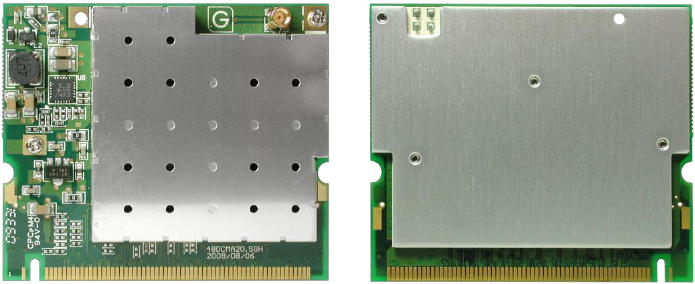Unex Technology DCMA86P2 DSRC 5.850 ~ 5.925GHz wireless Mini-PCI module User Manual
Unex Technology Corporation DSRC 5.850 ~ 5.925GHz wireless Mini-PCI module
user manual

1
DSRC wireless mini-PCI Module
User Manual
Model: DCMA-86P2
Version: 1.0
June 2012
2
Copyright Statement:
No part of this publication may be reproduced, stored in a retrieval system, or transmitted in any
form or by any means, whether electronic, mechanical, photocopying, recording or otherwise
without the prior writing of the publisher.
All copyright reserved.

3
IMPORTANTNOTE: FCC Radiation Exposure Statement:
This equipment complies with FCC radiation exposure limits set forth for an uncontrolled
environment. This equipment should be installed and operated with minimum distance 20cm
between the radiator & your body. This transmitter must not be co-located or operating in
conjunction with any other antenna or transmitter. The availability of some specific channels
and/or operational frequeny bands are country dependent and are firmware programmed
at the factory to match the
intended destination. The firmware setting is not accessible by the end user.
Wireless 5 GHz Band Statements:
This module could only been operated at 5850-5925 MHz frequency band.
This device is intended only for OEM integrators under the following
conditions:
1) The antenna must be installed such that 20 cm is maintained between the antenna
and users, and
2) The transmitter module may not be co-located with any other transmitter or
antenna,
Federal Communication Commission Interference Statement
This equipment has been tested and found to comply with the limits for a Class B
digital device, pursuant to Part 15 of the FCC Rules. These limits are designed to provide
reasonable protection against harmful interference in a residential installation.
This equipment generates, uses and can radiate radio frequency energy and, if not install-
ed and used in accordance with the instructions, may cause harmful interference to radio
communications. However, there is no guarantee that interference will not occur in
a particular installation. If this equipment does cause harmful interference to radio or
television reception, which can be determined by turning the equipment off and on, the
user is encouraged to try to correct the interference by one of the following measures:
Reorient or relocate the receiving antenna.
Increase the separation between the equipment and receiver.
Connect the equipment into an outlet on a circuit different from that to which the receiver
is connected.
Consult the dealer or an experienced radio/TV technician for help.
FCC Caution:
Any changes or modifications not expressly approved by the party responsible for
compliance could void the user’s authority to operate this equipment.
This device complies with Part15 of the FCC Rules.
Operation is subject to the following two conditions:
(1) This device may not cause harmful interference, and
(2) this device must accept any interference received, including interference that may
cause undesired operation.
As long as 2 conditions above are met, further transmitter test will not be required. However,
the OEM integrator is still responsible for testing their end-product for any additional
compliance requirements required with this module installed (for example, digital device
emissions, PC peripheral requirements, etc.).

4
IMPORTANT NOTE:
In the event that these conditions can not be met (for example certain laptop configurations or
co-location with another transmitter), then the FCC authorization is no longer considered valid
and the FCC ID can not be used on the final product. In these circumstances, the OEM
integrator will be responsible for re-evaluating the end product (including the transmitter) and
obtaining a separate FCC authorization.
Manual Information To the End User
The OEM integrator has to be aware not to provide information to the end user regarding how
to install or remove this RF module in the user’s manual of the end product which integrates
this module.
Objection of DSRC
Dedicated short-range communication (DSRC), also namely IEEE 802/11p, is a two-way
wireless communication technology designed for automobile user improving load safety.
DSRC is one of IEEE 802 family protocol. In order to improve load safety, DSRC can provide
low transmission latency and high transmission frequency up to 10Hz. According to DSRC, an
automobile user can acquire the up-to-date travel information and make a suitable activity to
avoid the travel accident.
Objection of DSRC-OBU
An On-board Unit (OBU) is a unit which equipped with DSRC wireless technique. DSRC-OBU
is responsible for gather travel status notifying to the driver.
This equipment is strictly limit the usage to DSRCS-OBUs.
To satisfy RF exposure, only dipole antenna(s) with a max gain of 5 dBi or similar antenna(s)
with equal or lesser gain may be used with this transmitter.
LABEL OF THE END PRODUCT:
The final end product must be labeled in a visible area with the following “Contains TX FCC
ID: NUK-DCMA86P2”.